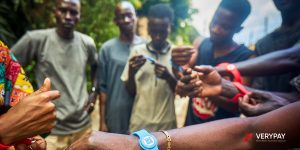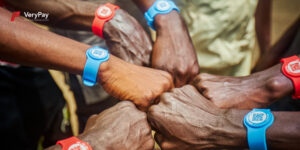
Technology has never been the problem. Access has.
Across the continent, brilliant digital systems have been built, yet millions remain outside their reach; not because they lack potential, but because design too often overlooks reality. Networks fail. Literacy varies. Trust takes time to build. True inclusion begins when technology bends to meet people where they are.
At Très Payer, every field deployment has reaffirmed one truth: inclusive fintech is not engineered in a lab; it’s earned in the field. From cashless school programs to social cash transfer digitisation, our teams have learned what it takes to make digital finance genuinely accessible, especially for the last mile.
Here are five lessons that continue to shape how we design technology for inclusion, scale, and impact.
1. Build for Offline First

Connectivity should never be a prerequisite for participation. In many rural communities, network gaps are the rule, not the exception. Designing with this reality in mind is not a constraint, it’s foresight.
Through innovations such as NFC-enabled cards, offline-capable POS terminals, et USSD interfaces for feature phones, VeryPay has shown that digital payments can function seamlessly even in low-connectivity environments. When technology works offline, inclusion becomes possible everywhere.
2. Design for Every Literacy Level

Simplicity is the highest form of sophistication. For users with limited digital experience, interfaces must speak clearly through icons, colors, and familiar patterns rather than complex text.
Inclusive design means more than translating a menu into local language; it means embedding cultural understanding and visual intuition. When users can act confidently without fear of error, technology earns their trust.
3. Partner with Local Ecosystems

Fintech cannot thrive in isolation. Local partnerships bring credibility, context, and continuity.
In Zambia’s Social Cash Transfer digitisation, collaboration with community development officers, mobile money agents, et district authorities created a shared ownership that technology alone could not achieve. Inclusion spreads faster when trust is built through people, not just platforms.
4. Measure Impact, Not Just Transactions

Volume does not equal value. True success in digital inclusion is measured not only by transaction counts but by empowerment outcomes; how many first-time users came onboard, how many women gained control over their income, and how many institutions became more transparent.
VeryPay’s analytics framework now moves beyond activity to insight, transforming data into a tool for accountability and progress.
5. Keep Human Support Close

Even the most advanced technology needs a human voice. Field deployments reveal that adoption soars when digital systems are backed by trusted agents, call centers, and WhatsApp support lines.
Human-digital integration ensures that inclusion feels personal, not procedural. It’s how users stay engaged long after the first transaction.
Conclusion

Financial inclusion is not achieved through innovation alone, it’s achieved through understanding. The most powerful fintech systems are those that adapt to their users, not the other way around.
Très Payer is part of the VerySell Group of Companies, an international technology group with over 35 years of innovation in AI and Information Technologies. This legacy continues to guide our mission, to build systems that connect people, empower institutions, and redefine what inclusion means in the digital age.
Because inclusion is not a feature; it is the foundation of progress.




